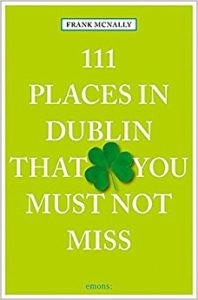Frank Sinatra sang My Kind of Town in the 1964 Rat Pack film (Robin and the 7 Hoods), he was joined by the crowds on the street as he walked out of the court house a free man. Mobster Robbo (played by Sinatra) had been framed and he was a grateful man that day and he was cheered on by onlokers. The song was nominated for an Academy award, but it lost out that year to another joyous tune, Chim-Chim-Chere-ee from the 1964 musical Mary Poppins.
Yet, Sinatra’s song became a beloved one, particularly to proud Chicagoans, and most of us know it. “And each time I roam, Chicago is calling me home.”
The American Library Association is headquartered in Chicago and it makes perfect sense that every four or five years the association schedules its annual conference there.
And that’s perfectly fine with me.
Despite its reputation for violence, corruption, traffic, heat and humidity, I love traveling to Chicago when ALA is scheduled in June. The light stays long into the evening after the conference events have ended, the streets are highly walkable, the restaurants are all delicious, and Chicago is just my “kind of town.”
My last trip to Chicago in June, I treated myself to a 1-1/2 hour river cruise at sunset given by the Chicago Architectural Foundation. The city is particularly stunning from the water and the history of hundreds of elegant skyscrapers comes alive with the sun to the west and the darkening sky to the east. It’s simply breathtaking.
My favorite non-fiction book happens to be set in Chicago. The Devil in the White City by Erik Larson parallels the construction and events of the Columbian Exposition (or 1893 World’s Fair) with the true story of one of Chicago’s serial murderers. (There are many other true serial murders set in Chicago, including Richard Speck, John Wayne Gacy and the 1940s Lipstick Killer, William Heirens.) My next trip to Chicago will definitely include a 3-1/2 mile CAF bus tour of the landscape of both the World’s Fair and the footsteps of evil Dr. D.H.H. Holmes.
But enough about Chicago and its crime. Let’s move on to one of its tragedies – the Great Fire of 1871. If you visit Chicago today, you can wander many of the same streets and imagine yourself on the banks of either of the forks of the Chicago River where the fire both started and stopped. It began in Patrick and Catherine O’Leary’s barn on DeKoven Street, jumped the South Branch of the Chicago River to the east, traveled north and then jumped the main Chicago River and burned most of Chicago along the banks of Lake Michigan. Due to rain and diligence of firefighters, the fires stopped just east of the North Branch two days later, saving the west of more destruction.
By October 10, 1871, the Great Chicago Fire caused 300 people to die, thousands of buildings to burn to the ground, and millions of dollars in damages. Over one hundred thousand more residents were left homeless. The devastation ran four miles in length along the lake and a mile west to east where it simply stopped on the banks of Lake Michigan on the east and was helped by rain on the western edge of the North branch for over 3 square miles.
In 1870, Chicago was the second largest city in the United States. It had become one of the nation’s transportation and a manufacturing and warehouse centers (both Montgomery Ward and Sears Roebuck catalog retailers made Chicago their home). Chicago was growing at a fantastic rate and by 1860, it had gained in political influence, surpassing St. Louis and Cincinnati, the other two Midwestern cities of note. In 1860 the Republican National Convention was held in Chicago and the participants elected Illinois native Abraham Lincoln.
Immigrant populations and wealthy manufacturers and capitalists flocked to Chicago after it was incorporated as a city in 1837. By 1871, Chicago was a bustling city of 324,000. Gracing and expanding on the banks of Lake Michigan it grew much like Boston did – to the west of the marshy wetlands of the waterfront. The land often flooded and for this reason there were miles of wooden sidewalks and boardwalks. In fact, Chicago was built almost entirely of wood. Some ornamental decorations in its magnificent buildings were crafted from wood and made to look like stone or granite.
Although it had a very modern fire department, there were preconditions and fatal mistakes that Sunday night of October 8 that caused the fire to spread with abandon. The city was hot, crowded, dry and windy. Some didn’t take the fire seriously; there had been a fire the night before that destroyed four city blocks. When the fire was spotted from the taller buildings in the city center, it appeared to be smoldering flames from the previous fire. The correct locations were not given more than once and fire alarms weren’t pulled.
The myth of Mrs. O’Leary’s cow – the one that knocked over the lantern and started the Great Fire of Chicago – is well known. However, Catherine O’Leary, an Irish immigrant, denied the story – in fact, the O’Leary’s were already in bed when the flames started in their barn that evening. They needed to be up well before dawn to milk their cows. This 19th century urban legend that blamed the working class has been debunked over and over in literature in the 20th and 21st centuries.
One of my favorite books about the Chicago fire is Jim Murphy’s The Great Fire (Newbery and Horn Book award winner). It’s a young adult book that is illustrated with original photographs and Murphy’s own maps of the fire as it progressed. Murphy’s book contains many of the same photographs and similar maps in The Great Chicago Fire in Eyewitness Accounts edited by David Lowe, 1979.
There are several other great children’s books: What Was the Great Chicago Fire by Janet Pascal and I Survived The Great Chicago Fire, 1871 by Lauren Tarshis. Both contain stories of eyewitnesses to the fire.
By 1890 there were over 1 million people living in Chicago. A building boom like no other had rebuilt the city. Chicago hosted the Columbian Exposition only two decades after the fire’s devastation. After the Great Fire, Chicago rose from the ashes and was America’s Second City (second to New York in population) for over a century until Los Angeles gained the title.
In the words of Sinatra – Chicago is “my kind of town.” It’s a beautiful city worthy of its praise. Visit Chicago for yourself either in the travel guides available or the stories of the Great Fire.
Charlotte Canelli is the library director of the Morrill Memorial Library in Norwood, Massachusetts. Read Charlotte’s column in the July 13, 2017 edition of the Norwood Transcript and Bulletin.



